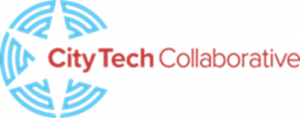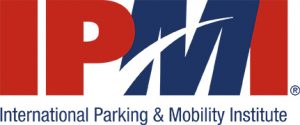By Brett Wood, CAPP, PE; and Rachel Yoka, CAPP, LEED AP BD+C

 The goal of this piece is to share seven key trends and innovations that will affect our industry and your business. This is not a definitive tome predicting the future, but rather a place to start examining where we are headed as an industry and generate conversations (and possibly arguments) about what that means for us as professionals. While it’s important to review recent survey results and relevant research, we also felt it’s critical to take a look at key bleeding-edge, disruptive, and innovative trends from within our typical space—as well as outside of it.
The goal of this piece is to share seven key trends and innovations that will affect our industry and your business. This is not a definitive tome predicting the future, but rather a place to start examining where we are headed as an industry and generate conversations (and possibly arguments) about what that means for us as professionals. While it’s important to review recent survey results and relevant research, we also felt it’s critical to take a look at key bleeding-edge, disruptive, and innovative trends from within our typical space—as well as outside of it.
Trend 1: Evolution of the Curbside Environment
During the past 10 years, the curbside environment in our cities, universities, and airports has changed dramatically, with rapid growth in competition for needs along the curb. What was once the domain of parking, loading, and transit now sees competition from food trucks, parklets, bicycles, transportation network companies (TNCs), and a variety of other uses. This rapid rise in competing interests naturally draws the concern of parking professionals, but the multi-faceted need is actually empowering industry professionals to think creatively and dynamically.
In recent years, our cities have adopted policies that promote flexible use of the curb, aiding businesses with loading needs in the morning, parking needs mid-day, and advanced passenger drop-off in the evenings. This dynamic approach is improving use of the curb and promoting higher activity and revenue for parking programs and businesses alike. With this new approach, we have seen increased thoughtfulness related to policy development, data collection and aggregation, and curbside access. As the transportation industry continues to change, the need to be flexible, creative, and dynamic along the curb will also grow.
FROM THE NATIONAL ASSOCIATION OF CITY TRANSPORTATION OFFICIALS (NACTO)
Trend 2: The Dynamic Parking
(and Transportation, and Mobility) Professional
Evolving responsibilities mean changing skill sets that are required for professional success, as organizations and as individuals. IPI’s 2018 Emerging Trends in Parking survey cited massive change on the horizon for parking professionals; in response to the question “Which of the following best describes the parking professional of the future?” 60 percent stated “parking, transportation, and mobility professional.” Roughly 10 percent selected parking professional or transportation professional.
The role of the current industry professional is already exceedingly more complex than it seems. Our readers know that well. However, the lists below, though not comprehensive, provide a snapshot of our professional areas of practice today and our evolving and anticipated ones. How will we prepare new team members who join our organizations? How will we keep our current employees and leaders engaged and learning these broad skill sets for continued growth? A significant strategic (and ideally annual) investment in continued training and professional development will be required of those organizations that are determined to stay ahead of the curve.
Current Tool Box/Qualities of the Parking Professional
- Operations
- Administration
- Management
- Technology
- Politics
- Economic development
- Community outreach
- Human resources
- Accounting
- Planning
- Sustainability
- Transportation demand management (TDM)
Tool Box/Qualities of the Future Industry/Mobility Professional
All current qualities, plus…
- Curb management
- Mobility as a service (MaaS)
- Smart city development and support
- Urban planning
- Data analysis and benchmarking/KPIs
- Mobile applications and technology integration
- Investment and management of alternative modes, including microtransit
- Transit integrations and partnerships (all modes)
- True TDM Integration
- Bicycle/electric bicycle/scooter programs/storage/share
- Accommodating and encouraging active transportation, including pedestrians
- Adaptive reuse and capital planning for industry change
And that is just the beginning…
Trend 3: Wrestling with Big Data
The concept of big data in the parking industry is nothing new—our leaders in the technology realm have been pushing us farther and farther into the worlds of data collection, aggregation, validation, and analytics. During the past decade, everyone from experts to field personnel have been focused on collecting and unearthing data from all parts of our systems, including:
- Back-end program management systems.
- Sensors and counting equipment.
- License plate recognition.
- Video analytics.
- PARCS equipment.
Now that we have all this technology, what do we do with it? First and foremost, professionals should be collecting data in a way that they can develop and maintain key performance indicators that support the growth of their programs. Whether that means internal performance metrics to validate and adapt program decisions or external benchmarks to compare against industry peers, the data we have been collecting and maintaining is a valuable source of information to chart our programs.
Second, as more and more cities adapt smart city policies and practices, parking can be at the forefront of this movement, both internal and external to our programs. Most of our advanced technologies are already in place and should be easily adapted for contributions to smart city systems. More importantly, the parking technologies of the past few years are likely customer focused and, we hope, revenue positive, both of which are central tenets of successful smart city technologies. A few examples of parking-related smart city technologies include:
- Wayfinding integrated into everyday apps.
- Smart and efficient enforcement.
- Mapping existing and underutilized assets.
- Creating opportunities for more informed choice and behavioral change.
Trend 4: Generational Shifts
Our conversations about millenials and their tremendous effect on society will continue, but more change is coming. Get ready for Generation Z or Gen Z (also known as iGeneration or iGen and post-millennials). Although the name and precise birth years aren’t yet decided (roughly mid-1990s to mid-2000s), we do know quite a few things about how this generation is different.
According to Nielsen data, Generation Z currently makes up 26 percent of the U.S. population, making it larger than the baby boomers or millennials. Its members will comprise 40 percent of all consumers by 2020. Much has been published about their eight-second attention span (down from 12 seconds in 2000), but this may be interpreted in more than one way. Fast Company magazine dug a bit deeper into the attention span question and found that Gen Z has what they call “highly evolved eight-second filters.” Because of the wealth of information and sources of that information, they make decisions on what to read or digest and what to discard very quickly. As professionals, we will need to understand and adapt, as Gen Z will be our customers as well as our employees. Other attributes of this cohort:
- They seek value for their money. They won’t hesitate to invest, especially on tech, but they will spend time making sure they find the best deal, either in stores or online.
- They are ambitious, driven, and under pressure to make a difference and gain work experience, including internships and mentoring experience.
- They communicate with multiple platforms—social media, podcasts, and their own branded material. Your typical public relations campaign for the boomers simply will not work across these platforms; they need shareable content and will create their own.
- They are collaborative, but also entrepreneurial—they don’t trust the establishment to provide them with long-term employment and a pension. They are prepared to make their own way.
Perhaps most importantly at present, gen Z grew up connected from birth. With approximately Gen five devices per person (and increasing by the day), they demand immediate and real-time information and seamless integration of services, including those in the mobility sphere.
Trend 5: Managing the Changing Workplace
During the past decade, the workplace has steadily taken on a new look in an effort to meet the desires of a new generation of workers. Led by the technology and innovation sector, the workplace has become less rigid and more about open collaboration. And the way we work has changed, with a great focus on flexible work schedules, digital and telecommute work options, and mobility to do your work from wherever you may be.
In response to this changing approach to the work environment, the professional who manages transportation and parking choice for the employment sector may need to rethink the way they provide for and manage parking. Employers will likely need to think about commute options for their employees, including flexible transit, parking, and mobility options. Employers also need to help educate and inform their employees of commute options, to help them make better decisions on a day-to-day basis. And commute choices should come with options for digital data access, which help employees keep working, even when on the move.
Trend 6: Disruptive and Innovative Technology
This trend often gets the most press, as almost all elements of the transportation industry are waiting eagerly to see the effects of full vehicle automation and driverless systems. The good news (we think) is that we don’t really need to wait for impactful transportation disruption. Today’s impacts, such as TNCs and shared mobility options, are already changing the way we manage parking. Changing electric vehicle ownership trends will likely change the way people make decisions about parking. And data-sharing, along with connected vehicles, will change the way we interact with parking technologies.
In regard to autonomous vehicles, the parking professional has a large stake in the ultimate outcome of their implementation and adoption. Vehicles that never park and always shuttle between destinations, waiting on their owners, have the potential to completely change how parking facilities operate. Autonomous vehicles that are part of a larger ride-sharing fleet could also change how and where vehicles are stored and recharged. The ultimate goal of the parking professional should be to have a seat at the table to help craft policy and make decisions about how cities adapt to and manage autonomous vehicles.
Trend 7: Active Transportation as A New Frontier
Active transportation,otherwise known as “nonmotorized transportation,” includes human-powered activity such as walking or bicycling and plays a significant role in the development of real estate. A high walk score can improve the value of your home or facility. Aside from the dollar value impact, the built environment, which includes neighborhood design, street layout, and building design, has a significant effect on the health of communities, families, and individuals. Walkability directly affects health. Living in a neighborhood with shops and retail within walking distance lowered the risk of obesity by 35 percent , according to a study in the American Journal of Preventive Medicine. Roughly 45 percent of respondents to the Emerging Trends survey citied the desire for more livable, walkable communities as a key societal trend affecting our industry, mirroring the 50 percent of U.S. residents who stated this was a high or top priority when considering where to live. Access to trails and green space further amplifies these impacts.
So it follows that where we place our facilities and our programs matters—in terms of access, convenience, and overall usage. Consider active transportation as a catalyst for development, a way to make employees healthier and more productive, and a method to increase retail visibility and sales volume.
Perhaps what’s most interesting about these trends will be where and when they intersect and amplify, or contradict, each other. The rise of TNCs and competition for the curb will be directly affected by the progress of autonomous vehicles (AVs) and other disruptive technologies. The focus of Gen Z on active transportation and the changing shape of work will transform how we develop real estate, especially in major metropolitan areas. Each of these trends will also help shape the evolution of the mobility, transportation, and parking professional—as an industry, we should be poised and ready for change.
Read the article here.
RACHEL YOKA, CAPP, LEED AP BD+C, is IPI’s vice president for program development. She can be reached at yoka@parking-mobility.org.
BRETT WOOD, CAPP, PE, is a parking planner with Kimley-Horn and co-chair of IPI’s Parking Research Committee. He can be reached at brett.wood@kimley-horn.com.
 IPMI Partners with City Tech to Launch the Millennium Gateway Innovation Lab, a Cross-Sector Collaboration to Help Shape the Future of the Parking Industry
IPMI Partners with City Tech to Launch the Millennium Gateway Innovation Lab, a Cross-Sector Collaboration to Help Shape the Future of the Parking Industry







